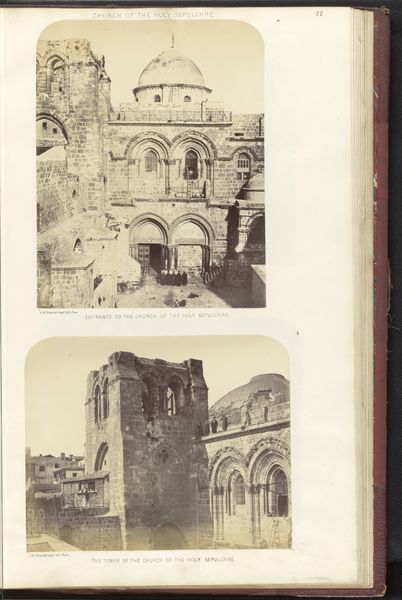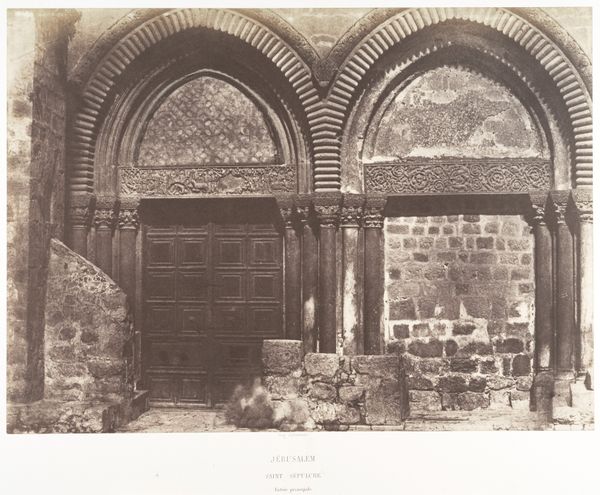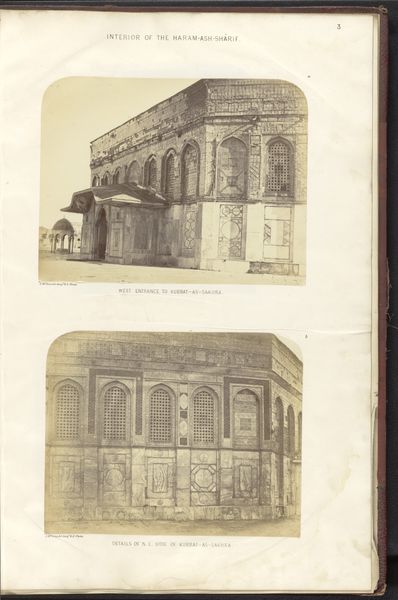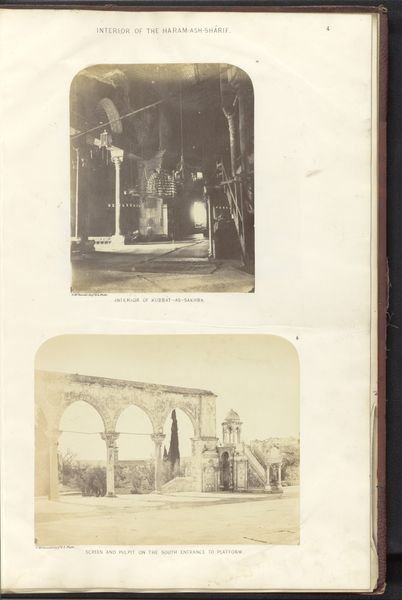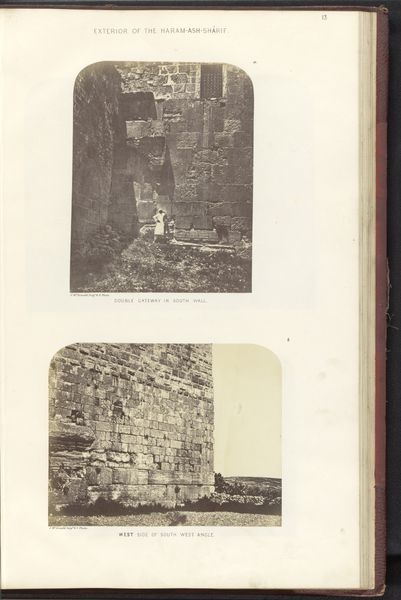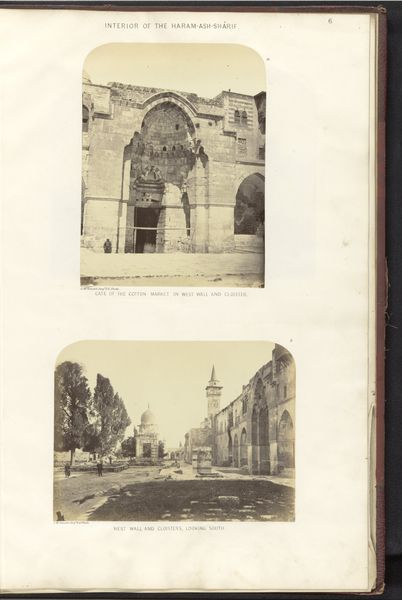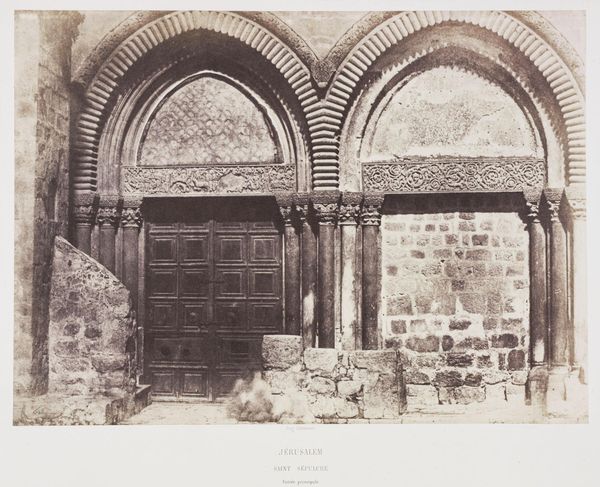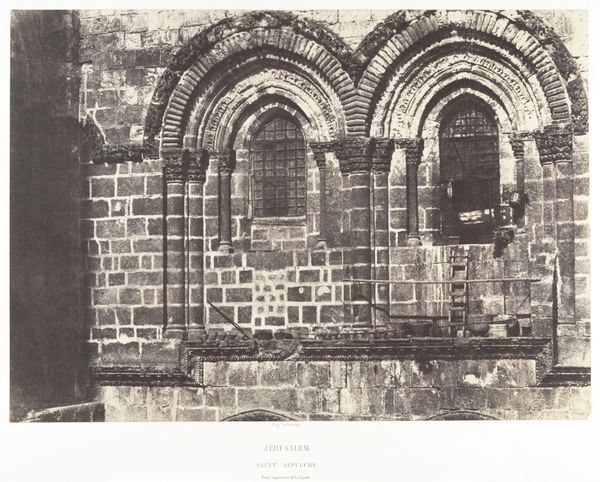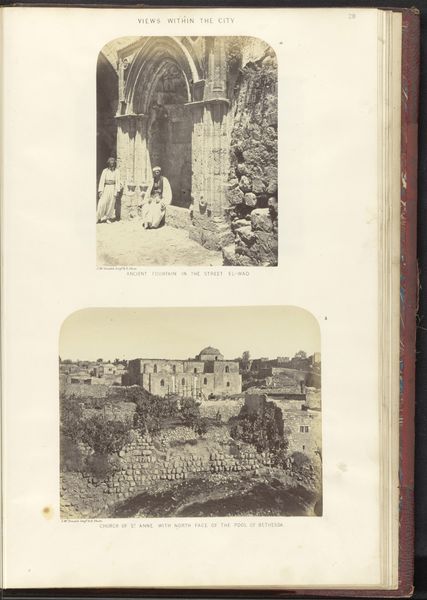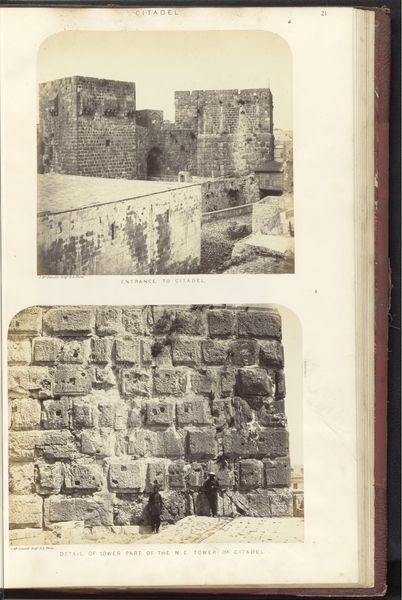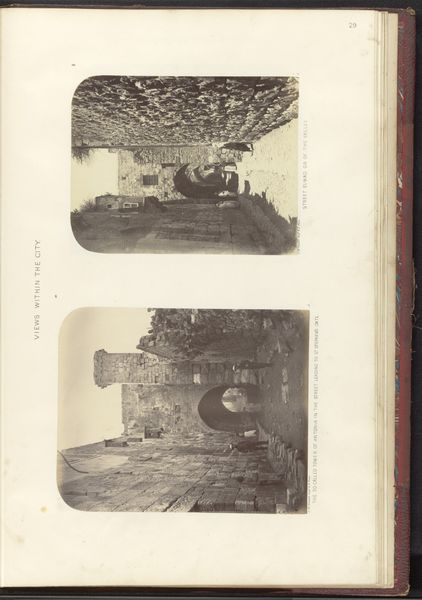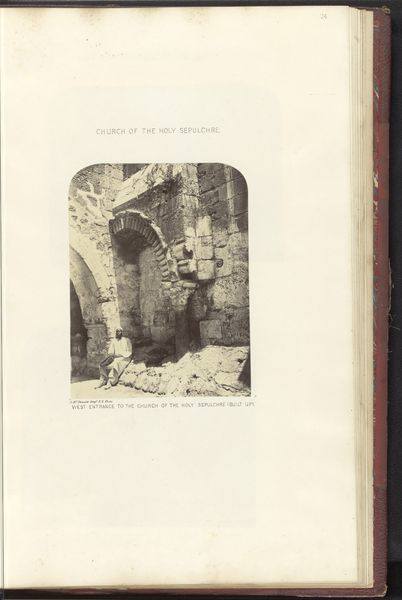
Gezicht op ramen in de zuidzijde en een gezicht op de ingang van de Heilig Grafkerk in Jeruzalem before 1865
0:00
0:00
print, photography, gelatin-silver-print, architecture
# print
#
landscape
#
photography
#
coloured pencil
#
ancient-mediterranean
#
gelatin-silver-print
#
cityscape
#
architecture
Dimensions: height 523 mm, width 340 mm
Copyright: Rijks Museum: Open Domain
Curator: This gelatin-silver print, taken before 1865, depicts two views of the Church of the Holy Sepulchre in Jerusalem: windows on the south side and the main entrance. It’s quite evocative, isn’t it? Editor: It really is. The light and shadow create such a strong sense of history and place. The figures in front of the entrance give it a human scale. What draws your eye when you look at this piece? Curator: I'm struck by how this image exists as a form of early documentary activism. Think about it – in a time of limited global travel, photography brought distant and culturally significant sites into homes, fostering a sense of shared heritage, but also reinforcing colonial power dynamics. What is being emphasized, and who is allowed access, both in the image and in the very act of its distribution? Editor: That's a perspective I hadn't considered. So, the act of photographing and sharing this image… Curator: …Becomes a political act. Consider also the subjects present: worshippers or simply individuals seeking respite? Are their stories being told, or are they simply part of the landscape, exoticized in the process? The photograph, while seemingly objective, reinforces existing social hierarchies. Can you see that reflected in the composition? Editor: I see what you mean. They are almost props to make the architecture even more grand and significant. What do you make of the contrast between the heavy stonework of the church and these figures? Curator: Exactly! It speaks volumes about power, permanence, and perhaps even a subtle commentary on the fleeting nature of human existence against the backdrop of enduring religious institutions. Editor: This has really changed how I see the photograph. It’s not just a historical document, but also a complex statement about power, representation, and the gaze. Curator: Precisely. Art, even seemingly straightforward architectural photography, can be a potent form of social commentary, urging us to critically examine the world around us.
Comments
No comments
Be the first to comment and join the conversation on the ultimate creative platform.
